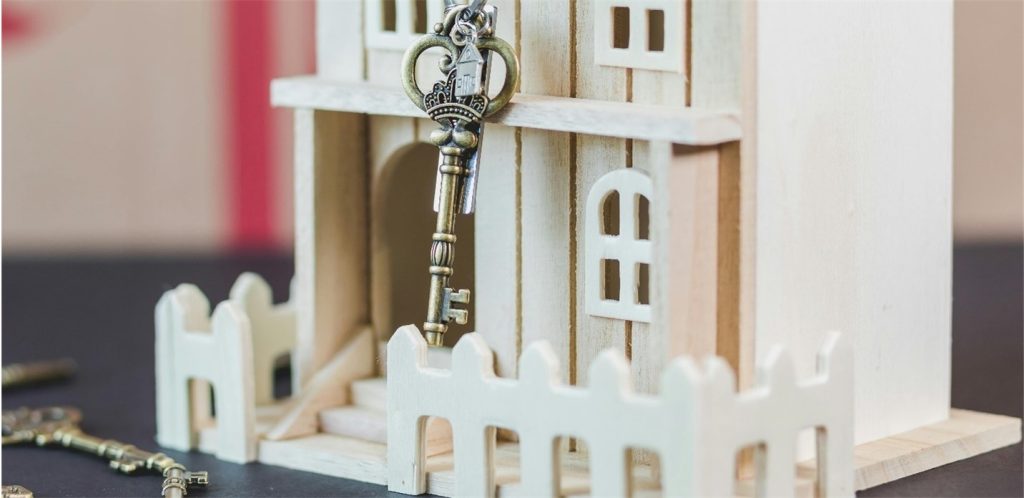
Ever heard the term wraparound mortgage? Because this is actually a set of two mortgages for the same home, it’s more complicated than a regular mortgage. It can present special risks, and it’s less commonly seen in the world of real estate.
That said, some have used it to be able to get a home deed in their own name.
Is that considered a good idea? Maybe. And how is it done? There are two main ways: through a seller, and through a professional lender.
Let’s take a walkaround through wraparounds!
Seller-Financed Wraparounds Help Buyers Buy, and Sellers Sell for Higher.
With a wraparound mortgage, a buyer can purchase a property and take over the seller’s existing mortgage. Here, we’re looking at a second loan on a home, by way of seller financing. This method has made homebuying possible for some people whose credit story might not fit the loan underwriters’ strict standards.
In regular financing, of course, the buyer gets a bank loan to pay for the home and the payment closes out the existing mortgage. In contrast, with a wraparound, the seller extends financing to the buyer.
It works like this. The parties leave the existing mortgage in place. The buyer plans to pay the seller monthly, so the seller can cover the home’s already-existing mortgage. The buyer has to cover the additional mortgage, too. And here is the tough part. The buyer’s new loan will likely come with a higher interest rate than the seller’s existing mortgage. That’s how the seller uses the buyer’s funds to pay off the existing mortgage for a monthly profit. As you see, a wraparound mortgage can make a seller more money than a regular home sale. Caution! For sellers, there is a risk that the buyer may default and leave the seller holding the bag.
So, what’s in it for buyers? As we’ve noted, a wraparound mortgage can help frustrated loan applicants finance home purchases. Caution! For buyers, there is a risk that the seller may run into financial hardships that could put the buyer in a difficult spot.
Two Loans to Buy One Home? This Strategy Brings High Risks and Silver Linings.

The 80-20 mortgage is wraparound loan strategy that gained popularity just before…yes, right before the mortgage crisis. The 80-20 setup covers the whole price of the home — that’s 100% financing; no money down. This offers more opportunities for people to jump onto the homeownership ladder and obtain that all-important home deed.
It goes like this. The buyer’s conventional mortgage handles 80% of the home price. And instead of paying the remaining 20% down, the buyer’s second loan covers the rest of the price.
A silver lining is the federally deductible mortgage interest on both loans, up to IRS limits.
Still, taking on two loans to buy one home is risky. If there are two lenders, the buyer has to repay each of them. If the mortgage plus wraparound loan all comes from one lender, the borrower still must pay closing costs and lender fees on both loans. The second loan will have its own eligibility requirements. And remember, that second loan will probably come with a higher interest rate than the primary mortgage.
That additional interest on a wraparound loan could become an issue if money gets tight. Plus, the less a buyer pays up front for a home, the higher the risk of possibly going underwater. If your local market droops, could your total mortgage debt go higher than your property value? As you can see, traditional down payments put buyers on firmer financial footing.
Do Lenders Even Allow The 80-20 Strategy Today?
Many won’t. Lenders want borrowers to have some skin in the game. Without a cash down payment, a borrower lacks that important bond with their new property: home equity.
Especially since the 2007-10 mortgage meltdown, wraparound (a.k.a. “piggyback”) and other high-risk loan strategies are rare. It’s easier to find second loans to cover only part of that 20%. In other words, it’s possible to find a first mortgage for 80% of the home price, with the second loan covering 10%. So, rather than the 80-20 (all-inclusive) mortgage, you could encounter less risky percentages, like 80-10-10 (for a 10% buyer down payment). That’s 90% financing. It’s safer, because the buyer is invested with some equity from the start.
SmartAsset explains it this way:
Since the housing recovery, piggyback loans have been limited to 90% loan-to-value. This means you have to put a down payment down (of 10%), rather than the 80-20 type loan used during the bubble.
Some lenders, including some credit unions, do offer loans with both the 80% and the 20% from one lending source. For certain buyers with credit scores of 640+, down payments can be anywhere from 0%-35%. This is a notably flexible stance. Piggyback mortgages usually demand the borrowers to bring high credit scores (740+) to the table.
But how do these lenders meet regulatory standards and still finance that 20%? With forgivable grants, partly. In this video, a credit union professional explains how this limited “assistance funding” works.
Note that Deeds.com is not affiliated with any of these products or providers. This article is here to describe the concept, not to provide financial or legal advice. Consult with a financial professional for guidance in line with your household’s unique set of circumstances.
Best Alternatives to the Wraparound Loan?
You can also look for tried-and-true loan products to make buying easier. Some of the most popular alternatives are:
- FHA loans. These enable buyers with average credit to lock in attractive interest rates, even with small down payments.
- USDA or VA loans for eligible applicants. Low or no down payments are allowed for some borrowers.
- Conventional loans backed by Fannie Mae or Freddie Mac. Attractive interest rates can be had with just 10% down. These loans require private mortgage insurance (PMI) but borrowers can get out of it once they hold a 20% equity stake in the property value.
Shop around. Many states offer down payment assistance or first-time buyer grants.
There’s an array of seller-financed alternatives, and we’ve got analysis for you. Review the risk-reward profile of seller-financed-home-sale.
Word to the Wise
Seeking out a wraparound mortgage can be a win, but it does have potential pitfalls. Before buying a home, it’s important to have reliable income and cash reserves. Owning is expensive! That’s why most professionals urge borrowers to aim for 20% down.
Short of a 20% down payment, most loans require private mortgage insurance (PMI) to protect the lender. Some borrowers have managed to avoid PMI by getting a wraparound loan for the down payment. Yet it’s easily possible to pay more for the wraparound loan than PMI costs! PMI might not be an issue for you under current federal policies that help home buyers.
And with a second mortgage, refinancing later gets more complicated, too.
So, should you go for it? It all depends on the parties’ current situations and future goals. Experienced real estate lawyers can provide critical advice for the parties on each side of the bargain.
Supporting References
Consumer Financial Protection Bureau: Ask CFPB – What Is a “Piggyback” Second Mortgage? (last reviewed Sep. 4, 2020).
APG Federal Credit Union (APGFCU®, Aberdeen, MD): 80/20 Program.
Rebecca Lake for SmartAssetTM via SmartAsset.com: The Pros and Cons of a Piggyback Mortgage Loan (updated Mar. 21, 2023).
Tim Lucas for MyMortgageInsider.com: Piggyback Loan (80/10/10 Mortgage) — Rates & Requirements 2024 (Jan. 3, 2024).
Steven Melendez for The Nest: What Is an 80/20 Mortgage Loan? (Leaf Group Media; updated Aug. 18, 2019).
And as linked.
More on topics: Seller financing, Seller-financed home sale, Assuming a mortgage
Photo credits: RDNE Stock Project and Mart Production, via Pexels/Canva.
